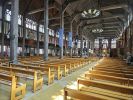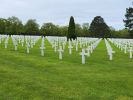05/09/2023 to 05/15/2023
The beaches of Normandy have been a top contennder on our list so off we went.
Naturally we flew to London first - our favorite stop - then chunnel to France and on to Bayeux.
Bayeux is right near the beaches, and a good place to stay while seeing all the sites in the area.
Bayeux is also the home of the Bayeux Tapestry - that extremely long embroidered account of William the Bastard invading and conquering England in 1066.
- Bayeux, Normandy Province, France
- Utah Beach, St-Mere-Eglise and More
- Omaha - Gold Beach - Arromanches
- Point du Hoc - Scaling the Cliffs
- Mont Saint-Michel
- Abbey de Hambye
- Chateau de Gratot
- Chateau de Pirou
- The Cite de la Mer - City of the Sea Museum
- Honfleur - The Harbour & Lieutenants House
- Honfleur - St. Leonard's & St. Cahterine Churches
- Honfleur - Salt Warehouse & Jardin du Tripot
- D-Day Museum, Cemetary & Driving Normandy
We chose to stay in Bayeux because it is fairly close to the coast and Normandy beaches. Plus it has quite a lot of history.
It was probably a trading area before the Romans founded a town here in the first century.
It is also home to The Bayeux Tapestry, that wonderful meters long depiction of William of Normandy invading and conquering England in 1066 at Hastings.
The town is just lovely and has many beautiful areas to walk, and of course, a huge Cahtedral. Hey, it's Europe!
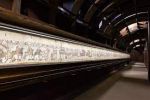
The Bayeux Tapestry. You can not take pictures in the museum so I downloaded a shot. The tapestry is very long.
An embroidery store. As you can guess, with the world's most famouse tapestry embroidery is a big thing in these areas

The Notre Dame Cathedral of Bayeux. Consecrated in 1077 to celebrate William the Conqueror's victory over England

I put this in just to show the rather narrow streets in Bayeux - the same narow streets are all around Normandy
Today was our first D-Day Beach adventure. Utah Beach, St-Mere-Eglise and some other stops filled they day.
One thing that has always seemed odd to me watching all those WWII movies is how the paratroopers and soldiers couldn't figure out where they were. Well now I know.
Today many of the roads that existed then are still around, some paved but some not. These are narrow little roads running between farm fields that were often flooded by the Germans and lined on each side with hedgerows. You really can not see anything on either side of those hedgerows.

Just to give you an idea of how the fields looked I downloaded this. Today they look the same, minus the water
This road is boarded by hedgerows. Our guide is actually just 2 feet down and inside the shrub but you can't see him. Now I understand why troops had so much trouble
I'm starting with events that began in the wee hours when the paratroops landed and before the beach assault. The road to Le Fiere Bridge

Fields around Le Fiere Bridge, sight of a 3 day bloody battle. It had to be held to prevent Germans from moving reinforcements.
This is the church in the very little hamlet of Angoville-au-Plain. Here is where Army medics Bob Wright and Ken Moore treated wounded of both sides

For tourist's sake they have a dummy paratrooper hanging from the steeple - The dummy is an omage to Pvt John Steele, played in The Longest Day by Red Buttons.-

In reality, he was hung up just above that little door in the back of the church where he was eventually taken prisoner by the Germans.
Today it looks nothing like it did then. Those dunes did not exist then. THe French Government constructed them to protect the farm fields in the area
Post war the resourceful French re-used these German beach obstructions for construction beams or any place metal was needed.
Day 2 of our D-Day tour and we head to Arromanches, the site of Gold Beach and the adjacent Omaha Beach. We arrived at low tied, and came back later in the day to see it at high tide.
We learned quite lot about German gun implacement, field of fire, and who went where and when.
Here is also what remains of the British Mulberry Harbor - that amazing piece of engineering that allowed the Allies to unload equipment and supply the troops.
Then on to Point du Hoc where the Rangers scaled the cliffs to roust the Germans from their bunkers.

I downloaded this to give an idea of what it looked like when finished. Sunken ships provided a sea break and the piers were where ships docked to unload.

Yes, it all had to float and the sunken parts were all different length depending on how deep it was to bottom for that piece
One of my favorite parts of The Longest Day is the Army Rangers scaling the cliff of Point du Hoc. Not sure why. Maybe I just admire rope work.
Anyway, it's hard to actually see many of the old gun implacements due to the overgrowth. Seems the "fun police" have fenced it all off and with no one tramping on the greass it's really covering everything.
With all the sheep and goats in the area you would think the preservation group would avail themselves of cheap yard workers.
We did learn very few bombs actually hit any targest here. Most of the destroyed gun emplacements was the demolition teams blowing them up after capture.

Those slabs of concrete can be seen in post-landing pics with US troops and a US flag - so they didn't get pounded by the navy
Another place we have always wanted to visit. The beautiful Mont Saint-Michel. The story goest he archangel Michael appeared in 708 to Aubert of Avranches, the bishop of Avranches, and instructed him to build a church on the rocky islet.
There has been a church here ever since. Needless to say it has grown in size significantly since the 8th century.
You can no longer drive out to it, but park in the Disney Parking Lot and take the DIsney Trolly to the bridge. No, it's not really Disney but it felt like it.
The church and buildings are quite spectacular. Glad we went.

You get dropped off on this causeway - constructed so as not to impede the tides. Or you can walk from the parking lot to here.

The Refectory where the monks ate their 3 meals daily. The tall narrow windows were so they could see what they were eating yet stay huble

The Great Pillars Crypt. This was also used as a prison. Louis XI put hi enemies here, and The French Revolution imprisoned monks who would not denouce their faith

On a lighter note, the choir room is right above and this round hole was put in so you could hear the singisng.

In 1820 this wheel was installed in what once was the Monks Ossuary. Prisoners would walk in it to bring up food and water

There is no place in Europe that does not have scaffolding. Keep telling our Financial Adviser to invest in it
A bit north of Mont Saint-Michel is the Abbey de Hambye. It was founded in the 12th century, and like most churches has had numerous ups and downs.
Thankfully a couple purchased the monstic buildings in 1956 and in 1964 The abbey church, the gatehouse and the lay brothers’ building were bought by the County Council of la Manche.
A concentrated effort to restore and preserve this and other historic buildings was undertaken, mostly by young adults who worked and slept on-sight each summer learning the skills necessary to bring these amazing buildings back to life.

The Abbey was also a victim of the French Revolution and it's secular vent. Over the years the building fell into disrepair and was quarried for it's stone and decorations
The chateau was built in the 14th century, and like most of these old estates it fell on hard times.
It was deserted, and in the 19th century local farmers used it to store fodder.
In the 1960's the same program that helped save Hambye Abbey saved the chateau. Young adults and teens worked tirelessly to clear away rubble, stabilize and rebuild.
Today it is also used as a site of various art programs and galas. When we were there it was getting prepped for a soiree of some sort.

A guy on rope burning off the growth from the stones. He started up top and worked his way down. Clever
Dating to the 12th century it is one of the oldest Norman castles on the Cotentin penninsula. The draw bridge was replaced in the 17th century by a stone bridge, but you can still see the slots for the draw bridge.
Like Chateau Gratot, this too has a legend attached
When the Vikings were besieging the castle the Lord of Pirou and his family used magic to turn themselves into geese and fly away. Unfortunately the spell to reverse the curse was burned by the Vikings so the family remained geese. Since then geese return to the Cotentin each year on their migration in March.
Another very interesting display is The Pirou Tapestry. Started in 1976 and finished in 1992 by Thérèse Ozenne, it is a humorous account of the conquest of southern Italy and Sicily by the Normans from the Cotentin area of Normandy.
Take that William and your Bayeux Tapestry!
After enjoying the chateaus we headed to Cherbourg to see The Redoutable, a decomissioned French nuclear submarine at The Cite de le Mer.
It took a few extra turns and some updated directions from Google Maps, but we finally got to the museum about 90 minutes before it was to close.
The submarine was just amazing. It took 2 years to remove it's reactor, replace it with a steel tube and fit out the sub for tourists - lots of padding on pipes and fixing tripping hazards, etc.
We were quite impressed and since it was just us and 2 other folks no chance of claustraphobia. YEAH!
After the sub we got to admire the display of small deep sea submersibles in the lobby. So many sizes and functions.
We drove east to the lovely old port city of Honfleur. Picturesque is the best word for this harbor and the many attractions.
The Lieutenants House is an old stone building from around the 17th century. It housed the royal lieutenants, who controlled all inputs and outputs from the port
It was once part of the city gates and the wall that surrounded the city.
If the house and port look familiar it's probably because Monet and many other artists have found inspiration here.
The Hundred Years' War - that period between the middle 1300s to the middle of the 1400's saw widespread devestation as England and France battled off and on for about 115 years over who could rule France.
Needless to say lots of destruction, and then lots of rebuilding.
These two churches were both destroyed by the English and then rebuilt during quieter times.
Each is so different from the other, but both are beautiful.

St. Leonard is patron saint of prisoners, pregnant women, coal miners, horses and greengrocers to name a few.

But they did pay attention to detail. The bell tower is separate so if lightening hits it the church does not burn
Salt was taxed in France in days of yore, unless you were the clergy or nobility or another "special person". Salt theiving became a big problem so it was stored in huge stone warehouses easy to guard.
Leaving Salt and moving on to Nature, we have Tripot Garden. This gem sits in an unmarked area between 3 streets.
The river was probably a location for laundry and social gathering in late medieval times.
There was a mill on the river in the 16th century, then came tanneries and dyeworks.
By the 1950s the businesses all closed and the area fell into disuse and neglecte.
But in 2013, the mayor launched a rehabilitation project to transform this little alleyway into something special

The Salt Warehouses. Honfleur had 3 and only 2 remain. Salt was a huge commodity, especially for cod and herring preservation
We opted to do the museums on our own rather than take up time when we were with our guide, so today we drove back to Arromanches, site of Gold Beach.
The museum was completely redone and opened back to tourists in April of this year. They have done a great job of covering the various aspects of the landings, especially the Mulberry Bridges and Harbor - my personal favorites.
Yes, we did also stop at the American Cemetary for a brief visit and to pay respects.
On our way back to Bayeux I did some video of a little of the drive around Normandy so you could get a little bit of the feel of the roads and tiny hamlets that are found all over Normandy


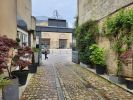








.jpg)


































.jpg)
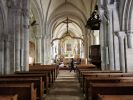





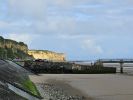








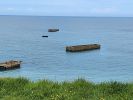



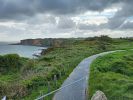



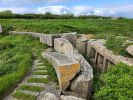





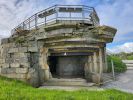





















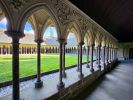








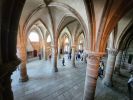

























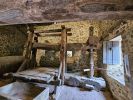














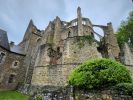

.jpg)

.jpg)



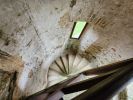




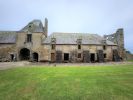





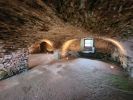

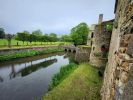




















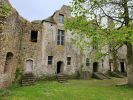






























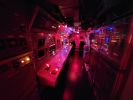


























.jpg)
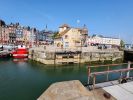






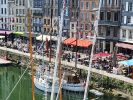
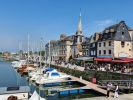
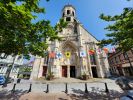

.jpg)


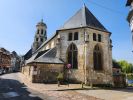

.jpg)
.jpg)

